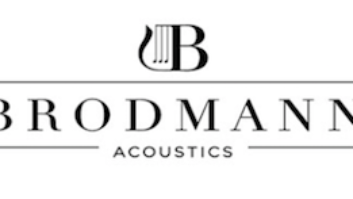TD 170-1 Turntable
The last record player I owned was a big hulking box of a thing with a buffalo nickel taped to the top of its tone arm. It boasted one ratty built-in speaker, you couldn’t close the lid with a record playing (not only because the platter was right next to the edge, but also because the power cord came out of the top of the plinth so that it could be wadded up and stored inside when the lid was closed and latched shut). And, oh yeah, it was covered in blue denim.

The TD 170-1 comes with an optional built-in phono amplifier
So, needless to say, my analog audiophile cred is exactly zero. But perhaps that makes me the ideal guinea pig for the Thorens TD 170-1 turntable. The company promises that “owing to its truly easy operation, you can start playing your records right away without having to waste time with finicky alignment work.” And I’ll admit that, although I’m a diehard digital audio devotee, a few complicated network setups as of late have left me longing for the simplicity of a supposedly plug-andplay, old-school audio source.
The TD 170-1 also comes with an optional built-in phono amplifier, further simplifying matters, and an insert in the instruction manual warns that models with integrated amps shouldn’t be plugged into the phono input of your preamp; not a problem, since my Anthem D2v lacks such an input. The TD 170- 1 even comes with its own built-in RCA output cables, which look a little thin and plastic to these eyes (although I’m not the type to spend thousands of dollars on an audio cable, I generally consider a good pair of Straight Wire Encore II interconnects a bare minimum for a high-fidelity source), but I remember audio guru John Kellogg explaining to me years ago that vinyl has about the same potential resolution as a 12-bit digital recording, so I figure the built-in cables are good enough.
So, with the “plug” part of the equation easily handled, I turn my attention toward playing. Being the dutiful manual reader that I am, I come across this bit of text: “Remove stylus guard carefully.” Okay, that I can do. “Turn the anti-skating knob counter-clockwise until it stops.”
Wait, the what?
A quick look at the accompanying diagrams resolved that matter, but I’m two sentences in and already running into vocabulary words I don’t know. This doesn’t bode well. The next few instructions are a little easier to follow. I attach the counterweight. I balance the tone arm. This is Newtonian physics. This I can handle. From there, though, the manual ventures into esoteric territories that absolutely blow my digital brain:
“Adjust to 1.5 mN (Milli-Newton) for the factory-installed pick-up cartridge OMB 10…” I’ve included the “required anti-skating force” chart as Table 1 of this review. The only reason I’m reasonably sure that’s English is because the mirror text on the opposite page is even more incomprehensible and uses commas instead of decimals.
I’ll be completely honest: at this point I just started twisting knobs and turning dials until the tone arm hovered evenly with the platter and dropped at the beginning of the record when I pushed the Start/Stop slider upward.
Next, I threw on the first of many albums borrowed from a friend–Highlights from the Very Best of Prestige Records–and kicked back for a listen whilst browsing the interwebs for an analog audiophile vocabulary lesson. And while I was soaking in the groovy tunes, I quickly realized that the Thorens actually is incredibly simple to set up, relatively speaking. I read about tweaks and adjustments I just can’t make on the TD 170-1, and wouldn’t know how to make if I could. But I listened for the sorts of problems that can arise from a poor turntable setup–things like wow and flutter and crosstalk, oh my!–and I’m not hearing any of those, so I must not be doing anything terribly wrong.
As I browsed through my stack of appropriated vinyl, comparing the albums here and there with CD copies, I’m struck by the fact that although CDs have much more potential dynamic range, LPs make more use of their potential. They’re also richer, meatier, and more tactile. And, yes, vinyl carries with it a certain amount of distortion– generally anathema to my digital mindset–but I find that more often than not, that distortion lends a certain warmth to the music that I rather like.
I wouldn’t quite call myself an analog convert yet. I still prefer the convenience of digital and the superior fidelity of the few truly well-mastered digital recordings. But the TD 170-1 has opened a long untraveled road that I’m looking forward to exploring a little more. Consider it a gateway turntable. Yes, the setup is a lot more complicated than the ad materials would have you believe, but it takes little more than a glance at the audiophile forums on the web to realize it could be a whole lot fussier than this.
616.885.9809 (WS Distrib.)
www.thorens.com
Kudos
The Thorens TD 170- 1 delivers solid vinyl performance without the exorbitantly nitpicky setups of many turntables. It also comes with an optional phono preamp–a big plus, given how many modern processors lack dedicated phono inputs.
Concerns
The cheap, plastic (nonreplaceable) RCA audio outputs are disappointing, and the instruction manual tends to read like… well, stereo instructions.
Product Specs
■ Drive System: internal flat drive belt
■ Motor: electronically controlled DC motor
■ Speeds: 33-1/3, 45, 78 rpm
■ Tone arm: Thorens TP 18
■ Pick-up Cartridge: OMB 10
■ Anti-skating (Bias) by spring (adjustable)
■ Finish: black, silver, or red structured enamel
■ Optional built-in phono preamplifier (TD 170-1 phono)

